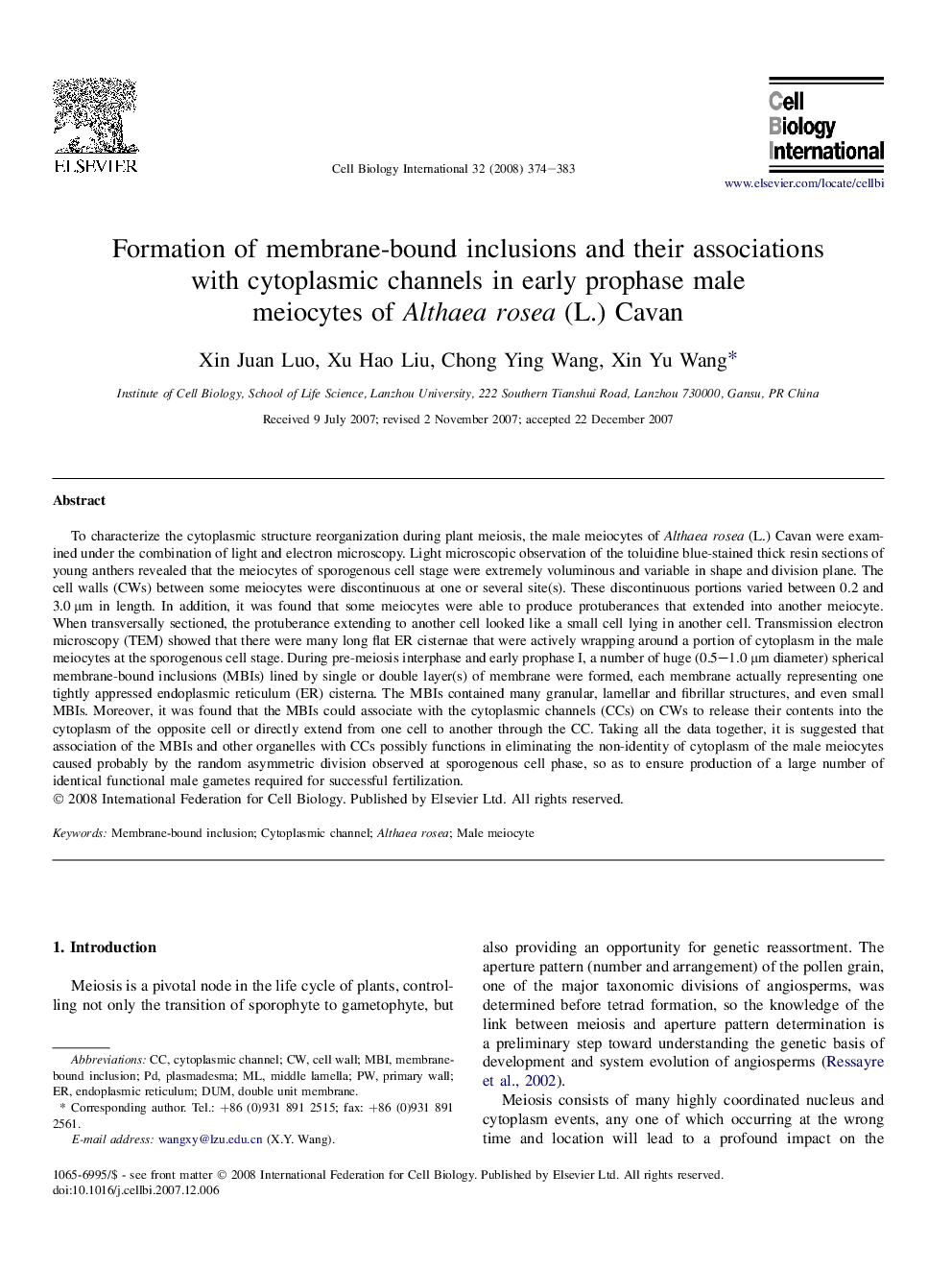| کد مقاله | کد نشریه | سال انتشار | مقاله انگلیسی | نسخه تمام متن |
|---|---|---|---|---|
| 2067370 | 1077895 | 2008 | 10 صفحه PDF | دانلود رایگان |
عنوان انگلیسی مقاله ISI
Formation of membrane-bound inclusions and their associations with cytoplasmic channels in early prophase male meiocytes of Althaea rosea (L.) Cavan
دانلود مقاله + سفارش ترجمه
دانلود مقاله ISI انگلیسی
رایگان برای ایرانیان
کلمات کلیدی
موضوعات مرتبط
علوم زیستی و بیوفناوری
بیوشیمی، ژنتیک و زیست شناسی مولکولی
بیوفیزیک
پیش نمایش صفحه اول مقاله

چکیده انگلیسی
To characterize the cytoplasmic structure reorganization during plant meiosis, the male meiocytes of Althaea rosea (L.) Cavan were examined under the combination of light and electron microscopy. Light microscopic observation of the toluidine blue-stained thick resin sections of young anthers revealed that the meiocytes of sporogenous cell stage were extremely voluminous and variable in shape and division plane. The cell walls (CWs) between some meiocytes were discontinuous at one or several site(s). These discontinuous portions varied between 0.2 and 3.0 μm in length. In addition, it was found that some meiocytes were able to produce protuberances that extended into another meiocyte. When transversally sectioned, the protuberance extending to another cell looked like a small cell lying in another cell. Transmission electron microscopy (TEM) showed that there were many long flat ER cisternae that were actively wrapping around a portion of cytoplasm in the male meiocytes at the sporogenous cell stage. During pre-meiosis interphase and early prophase I, a number of huge (0.5-1.0 μm diameter) spherical membrane-bound inclusions (MBIs) lined by single or double layer(s) of membrane were formed, each membrane actually representing one tightly appressed endoplasmic reticulum (ER) cisterna. The MBIs contained many granular, lamellar and fibrillar structures, and even small MBIs. Moreover, it was found that the MBIs could associate with the cytoplasmic channels (CCs) on CWs to release their contents into the cytoplasm of the opposite cell or directly extend from one cell to another through the CC. Taking all the data together, it is suggested that association of the MBIs and other organelles with CCs possibly functions in eliminating the non-identity of cytoplasm of the male meiocytes caused probably by the random asymmetric division observed at sporogenous cell phase, so as to ensure production of a large number of identical functional male gametes required for successful fertilization.
ناشر
Database: Elsevier - ScienceDirect (ساینس دایرکت)
Journal: Cell Biology International - Volume 32, Issue 4, April 2008, Pages 374-383
Journal: Cell Biology International - Volume 32, Issue 4, April 2008, Pages 374-383
نویسندگان
Xin Juan Luo, Xu Hao Liu, Chong Ying Wang, Xin Yu Wang,